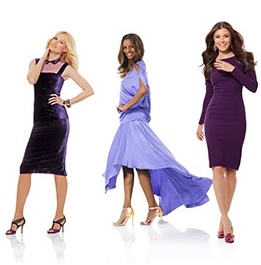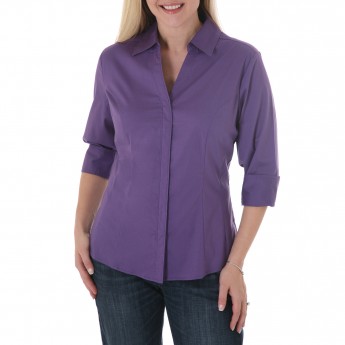1.
Have you seen the new “Know Your Breasts” Bra Finder that Herroom launched on Friday? You can already find a review of how the latest Herroom tool worked for Never Took Home Ec. According to my own results, my issues are splayed, settled and uneven breasts, outward pointing apex, and narrow shoulders.  “Know Your Breasts” did an excellent job of explaining how to address each of these issues. Sadly, it did a terrible job of putting it all together. Many of the solutions don’t exist in certain bra sizes OR don’t exist together with the other solutions. However, Herroom deserves big kudos for recognizing and highlighting the role that breast shape should play in finding a bra, and I hope their excellent start only improves from here.
2.
The September magazine issues are out, and I’m in the middle of poring over them. In O Magazine this weekend, I discovered what I already suspected from my last thrift store report: “Purple works for every complexion”. (Actually, according to my instructor Carol Davidson, any color works for any complexion–it’s just a matter of finding the right value, chroma and temperature for you.)

Here’s another surprising find from O Magazine: a $20 blouse with double bust buttons under covered placket from Riders by Lee. It’s made for the general public so unlikely to fit as well as the specialty brands listed on the Clothing for Us page, but I think it’s great that a mainstream brand is finally trying to address the issue of the gap. For D-F cup women, this may be an affordable option!
3.
If you need a reminder to continue to play to your strengths, be encouraged by Georgina’s example in Fat Girls Should Wear Baggy Clothes. I love that she shows how both she and Erica of A Sophisticated Pair can wear an identical dress despite their very different bodies.
Along the same theme, also check out Cheryl’s recent Outfit of the Day post where she reminds us, “The trick is to make the best of what you do have, and in my case I like my lower legs and small waist so that’s what I’ve played up . . . .”
4.
There’s an alteration for that. Bras I Hate has actually figured out How to Make a Pointy Bra Round, and Quest for the Perfect Bra recently found a way to get rid of the saggy boobs effect in an otherwise very flattering (and purple!) top.

I liked the idea of the HerRoom brafinder but I was kind of disappointed- the lack of a summary of all the “problems”. I found their section on latex allergies interesting but I felt it could go farther.
I can’t decide if I like the universal cup size function.
I found clicking through the process interesting but at the end…no “personalized” suggestions for me! Just suggestions for one of the types of shapes I had picked. However, as someone who sees a lot of boobs, I thought they did a great job covering the many different breast shapes out there. I have been thinking more about wanting to help women with hypomastia/insufficient glandular tissue get diagnosed before they have their first baby. Some of those illustrations were clear and classic IGT. Could we partner up with bra stores to help women identify possible issues??
Wow Rebecca. That’s a great idea. Do you have thoughts on how to begin to do this? How can I and other bloggers help?
What a great question! Do you think if I wrote a post about hypomastia and other anatomical variations that can suggest IGT, people would be willing to link/publicize? That would be a start! In my fantasy world, websites like herroom could also have informational links available for women who indicate that their breasts have characteristics that suggest IGT. I want to help strike a balance so women who get this information don’t think “forget it, I can’t breastfeed” – ALL of those women can breastfeed! Some women with those types of breasts can make a full supply with no intervention, others can make a full supply with some intervention, others will make a partial supply and can still enjoy breastfeeding while making informed choices about how to supplement. It just breaks my heart when women who have obvious anatomical signs of IGT are never diagnosed and go through a lot of difficulty and emotional distress when they try to breastfeed with no support.